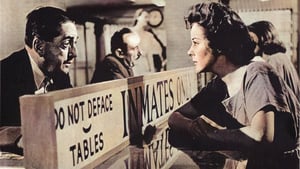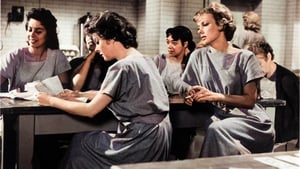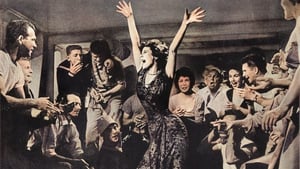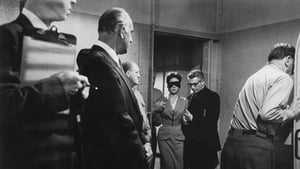Contact: [email protected]
Video Sources 0 Views
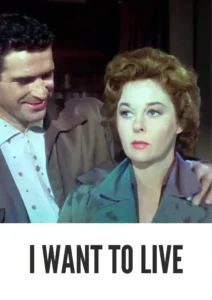
Synopsis
Review: I Want to Live! 1958 – A Gripping Tale of Justice and Redemption

Introduction
Welcome to the intense world of I Want to Live! 1958, a riveting crime drama that has recently undergone the transformative process of early colorization. In this article, we delve into the significance of this version, exploring how colorization adds a new dimension to the viewing experience and its broader implications in film history.
Check The Full Colorized Movies List
Check Our Colorized Movies Trailer Channel
Understanding I Want to Live! 1958: Director, Cast, and Genre
Directed by Robert Wise, I Want to Live! 1958 is a powerful exploration of justice and redemption in the face of adversity. Starring Susan Hayward in a mesmerizing performance, the film delves into the harrowing true story of Barbara Graham, a woman convicted of murder in the 1950s. Wise’s direction infuses the film with a sense of urgency and tension, making it a gripping watch from start to finish. Genre-wise, I Want to Live! 1958 falls into the category of crime drama, with its intense storyline and complex characters captivating audiences around the world.
Exploring the World of I Want to Live! 1958: Plot and Characters
Set in Los Angeles, I Want to Live! 1958 follows the life of Barbara Graham, a young woman with a troubled past who becomes embroiled in a murder case. Framed for a crime she insists she did not commit, Barbara finds herself facing the death penalty as she fights to prove her innocence. As the story unfolds, we are introduced to a cast of characters who each play a pivotal role in Barbara’s journey, from her devoted attorney to the hardened criminals she encounters in prison. The film’s gripping plot and compelling characters keep viewers on the edge of their seats as they root for Barbara’s fight for justice.
The Art of Film Colorization
Film colorization, the process of adding color to black-and-white footage, has been a subject of much debate in the film industry. While some purists argue that it detracts from the original artistic vision, others see it as a way to breathe new life into classic films and make them more accessible to modern audiences. The process has evolved significantly over the years, with advancements in technology allowing for more accurate color reproduction. However, the decision to colorize a film remains a controversial one, with strong opinions on both sides of the debate.
Early Colored Films: A Brief History
The concept of coloring films dates back to the early days of cinema, with hand-tinting techniques used to add color to individual frames. However, it wasn’t until the mid-20th century that color films became the norm, with the advent of Technicolor and other color processes. These early colored films revolutionized the industry, allowing filmmakers to explore new creative possibilities and capture the world in vibrant hues.
I Want to Live! 1958 and Its Early Colored Version
The decision to release I Want to Live! 1958 in a colorized format marks a departure from its original presentation. While some may argue that it alters the film’s intended aesthetic, others see it as an opportunity to introduce a classic film to a new generation of viewers. The early colored version of the film seeks to enhance the viewing experience, adding depth and dimension to the story while preserving its raw emotional impact.
The Debate Over Film Colorization
The debate over film colorization is a contentious one, with strong opinions on both sides of the argument. Proponents argue that it allows classic films to reach a wider audience and breathe new life into old favorites. However, detractors argue that it compromises the integrity of the original film and alters the director’s artistic vision. As technology continues to advance, the debate over film colorization shows no signs of abating.
Examining I Want to Live! 1958 as an Early Colored Film
As one of the first black-and-white films to receive the colorization treatment, I Want to Live! 1958 provides a unique opportunity to explore the impact of this technique on the viewing experience. While purists may argue that it alters the film’s original aesthetic, others may appreciate the added dimension and visual flair that colorization brings to the story. Ultimately, the success of colorization depends on its ability to enhance the film without overshadowing its original charm.
Influence and Legacy: I Want to Live! 1958‘s Impact on Cinema
Despite the controversy surrounding its colorized release, I Want to Live! 1958 remains a poignant and thought-provoking film that continues to resonate with audiences around the world. Its powerful portrayal of justice and redemption has left an indelible mark on the genre, inspiring countless filmmakers to explore similar themes in their own work. Whether viewed in its original black-and-white format or the early colored version, I Want to Live! 1958 stands as a testament to the enduring power of cinema to provoke thought and inspire change.
Director’s Cinematic Legacy: Beyond I Want to Live! 1958
Robert Wise’s contribution to cinema extends far beyond I Want to Live! 1958, with a diverse body of work that includes iconic films such as West Side Story and The Sound of Music. His skillful direction and commitment to storytelling have earned him numerous accolades, including multiple Academy Awards. Wise’s legacy serves as a reminder of the profound impact that a talented filmmaker can have on the world of cinema.
Themes Explored in I Want to Live! 1958
I Want to Live! 1958 explores a variety of themes, including justice, redemption, and the human cost of crime. Through Barbara Graham’s harrowing journey, the film shines a spotlight on the flaws and injustices of the criminal justice system, raising important questions about morality and the nature of punishment. Its thought-provoking themes continue to resonate with audiences today, making it a timeless classic that remains as relevant as ever.
Reception and Controversy Surrounding I Want to Live! 1958
Upon its release, I Want to Live! 1958 received widespread critical acclaim, with critics praising Susan Hayward’s powerhouse performance and the film’s compelling narrative. However, the decision to release the film in a colorized format sparked debate among cinephiles, with some embracing the change and others lamenting the loss of its original black-and-white aesthetic. Despite the controversy, the film’s enduring popularity has solidified its status as a cinematic classic.
Where to Watch I Want to Live! 1958 Online
For those eager to experience the power of I Want to Live! 1958, the film is readily available on popular streaming platforms such as Amazon Prime Video and iTunes. Whether you choose to watch it in its original black-and-white format or the early colored version, the film promises to leave a lasting impact on viewers with its gripping story and powerful performances.
FAQs About I Want to Live! 1958
Q: Is I Want to Live! 1958 based on a true story? A: Yes, I Want to Live! 1958 is based on the true story of Barbara Graham, a woman who was convicted of murder in the 1950s and sentenced to death.
Q: Who are the main actors in I Want to Live! 1958? A: The film stars Susan Hayward in the lead role of Barbara Graham, with supporting performances from Simon Oakland, Theodore Bikel, and others.
Q: What awards did I Want to Live! 1958 win? A: I Want to Live! 1958 received critical acclaim upon its release and was nominated for several Academy Awards, with Susan Hayward winning the Oscar for Best Actress for her portrayal of Barbara Graham.
Conclusion
As we conclude our exploration of I Want to Live! 1958, it becomes clear that the film’s enduring appeal transcends its colorization controversy. Whether viewed in its original black-and-white format or the early colored version, the film continues to captivate audiences with its timeless charm and powerful storytelling. As viewers, we are reminded of the importance of preserving cinematic treasures like I Want to Live! 1958 and honoring the director’s artistic vision. In the end, it is not the color of the film that matters, but the depth of its storytelling and the impact it leaves on audiences around the world.
